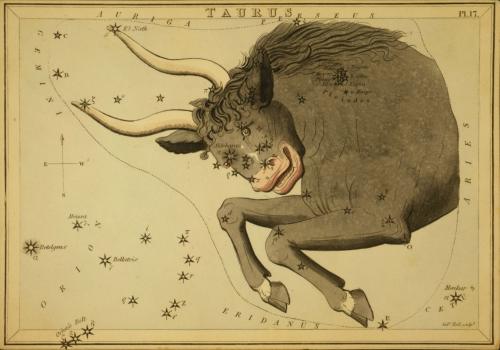Tonight – November 14, 2016 – as darkness falls around the world, we’ll all see a full supermoon, still (nearly) the closest supermoon since 1948. For Asia, Indonesia, Australia and New Zealand, the moon appears at its most full this evening. From the Americas, the moon was closer to full on the morning of November 14 and is a waning gibbous moon on this night. Look back at our post for yesterday, if you want to understand more about why the closest moon since 1948 falls on two different dates. It’s all one event. It’s just that our clocks and calendars say different things.
Want to know more about this event specifically? Click here: Closest supermoon since 1948.
Want to know more about supermoons in general? Try this post: What is a supermoon?
Don’t worry too much about the dates. On both November 13 and November 14, the moon will appear exceedingly close to full and very bright … no matter where you are on Earth.
Do you notice some stars near tonight’s supermoon? You’ll find the moon moving eastward in front of the constellation Taurus the Bull tonight. Because the moon is so bright on this night – and will continue to shine brightly as it moves through Taurus over the next several nights – it’s very difficult to view the starry outline of the Bull right right now. Still, you can likely pick out some prominent features of Taurus, particularly the bright reddish star Aldebaran and the Pleiades star cluster, near the moon over these next several nights.
For a better view of them, try blotting out the moon with your finger.
Over the coming evenings, as the moon continues along on its rounds through the constellations of the zodiac, the moon will leave the evening sky, leaving Taurus in clearer view.

In previous posts, some people have questioned our saying that the moon always moves eastward in front of the constellations of the zodiac. We get it! The moon’s motion is complex and possibly confusing.
But it’s true – if you watch you’ll see. The moon always moves eastward through the constellations of the zodiac, but – if you watch the moon during the night – you’ll observe that it moves westward across the sky, much as the sun does during the day.
Use these two stellar signposts – Aldebaran and the Pleiades cluster – to notice that they, too, go westward across the sky during the night. Keep in mind that the westward motion of the moon and stars across the sky tonight (and the westward motion of the sun during the day) is really a reflection of the Earth spinning upon its rotational axis from west-to-east.
In the parlance of astronomers, the daily westward movement of the stars, sun, moon and planets is referred to as diurnal motion.
To discern the moon’s true orbital (eastward) motion around Earth, note the moon’s change of position at the same time each day, relative to the backdrop stars of the Zodiac. The star Aldebaran is on the Zodiac, too. Notice the moon’s location with respect to this star tonight, and then look again tomorrow night. You’ll see the moon’s eastward motion among stars of Zodiac.
This motion is a reflection of the moon’s true motion in orbit around Earth.

Bottom line: Look for the November 14, 2016 moon to light up the constellation Taurus the Bull, not far from its bright star Aldebaran and prominent Pleiades star cluster. The moon tonight is closer than it’s been since 1948.











